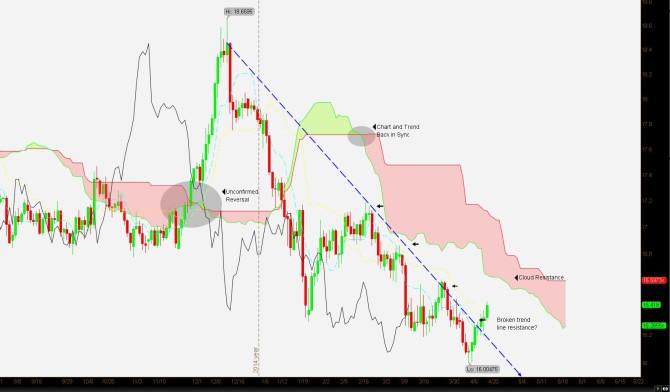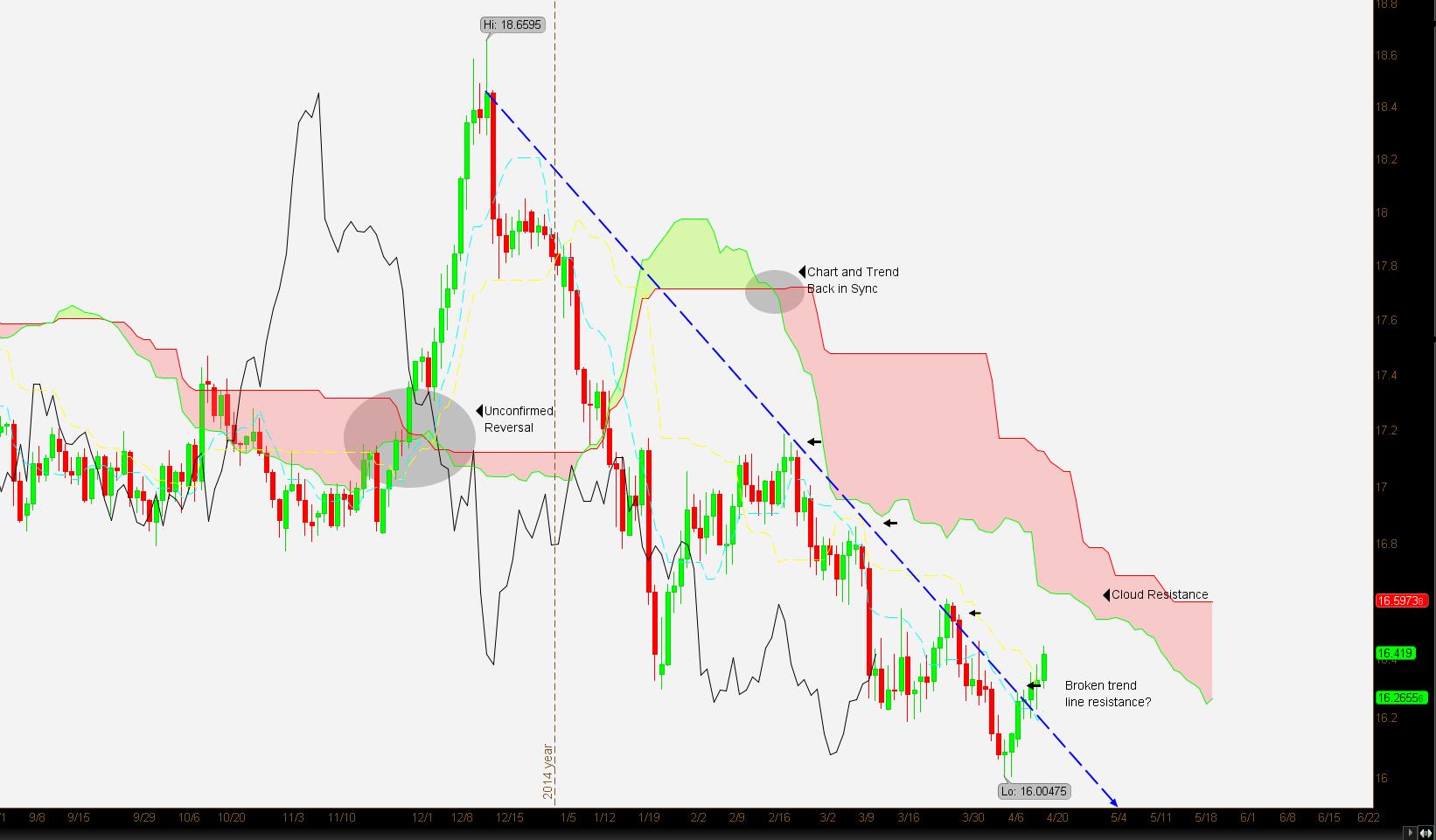On 9 April, the five member board of the Bank of Mexico unanimously agreed to leave its overnight lending target rate unchanged at 3%. It is in the envious position of sharing its northern land border with the United States and a member of the North American Free Trade Agreement. Under NAFTA 90% of its exports and 55% of its imports trade with the US. Trade agreements exits with the EU as well as with Asian economies.
Mexico is ranked 15th as a world economy and 11th in purchasing power parity. Over several successive democratically elected administrations it has reined in inflation, diversified the economy and privatized state owned businesses. These former state owned businesses include telecommunication, power generation, oil and gas production and transportation to name a few. GDP is expected to grow a full 3% in 2015 which translates to 4 times as much credit growth.
The decline in oil prices has paralleled a slowdown in the Mexican economy starting in December of 2014 but the weakness is not across the board. Oil is a major export of Mexico but through reforms and diversification Mexico is not a petro-state economy. For examples, Aircraft and Automobile manufacturing, research, design and development are major components of its industrial sector. On the manufacturing side the quality of the end products is globally recognized. Mexico ranks sixth in electronics manufacturing and the sector is growing at a double digit rate.
Mexico’s private banking sector is well capitalized, profitable and well integrated with the international financial institutions. Its equities market is second only to Brazil. Its inflation rate is about 3%. The overnight lending rate is 3%. Its sovereign debt is S&P rated BBB+. Central bank reforms were instituted after its currency crashed in 1994. These reforms include accumulating foreign currency reserves with oil revenues as well policy tools on par with advanced economy central bank standards. The mandate for Banco de México is to maintain price stability, in particular, the purchasing power of the Peso.
Guest post by Mike Scrive of Accendo Markets
| EUR/MXN | Price Location | Span A | Span B | Tenkan vs Kijun | Sentiment |
| Trend Negative | Below Cloud | Resistance at 1.6466 | Above Span A | Crossover Bearish | Negative |

To the point, the Mexican Peso is a stable emerging market currency, with a diversified globally integrated economy and currency reserves backed by oil revenues. The question is how to trade it. One important fact is that Mexico is mostly disconnected from the Eurozone. An examination of a 52 week chart of EUR/MXN demonstrates a long drawn out period of steady decline with repeated testing cloud resistance, a sharp unconfirmed reversal near the end of November 2014 reaching a high of 18.6595 Pesos to the Euro.
In December the volatility was quite chaotic. Span A crossed above Span B for three days before returning below Span B. Similarly for the Tenkan/Kijun lines. Even the sentiment was negative as evidenced by the Chikou line. One explanation is it that it was merely year end short covering. Another explanation had more to do with a weak US retail sales report. More than 75% of Mexico’s exports to the US are for the retail sector. Lastly, it may have been a combination of the two in addition to the effect of excessive oil supplies.
The downward trend was broken for a short bit during the month of February, recovering to 17.10 Pesos for one Euro. However, the chart and all of its indicators strongly confirms the resumption of the strengthening Peso vs the Euro. On 15 April, ECB President, Mr. Mario Draghi announced that the QE program would continue for at least the near term thus weighting EUR/MXN more towards Peso volatility than Euro volatility. All verify that the close relationship with the US economy through NAFTA, the strength or weakness of the Peso may parallel the strengths and weaknesses of US economic data.
What are the possible outcomes?
On 14 April, the IMF announced that the global economy is expected to grow 3.5% in 2015; emerging economies at 4.3%. In particular a slowing in South America’s leading economy, Brazil, is expected to slow regional growth. However, this may not be the case. Brazil’s main export/import partner is China whereas Mexico’s main export/import partner is the United States.
Brazil exports iron ore to China. In the Pacific Rim Australia is a competing exporter of iron ore and is already feeling the effects of weak demand from China. Mexico’s main exports to the US are automobiles, consumer electronics and agricultural goods. The US Fed’s accommodative rate policy is purposed exactly for consumer demand . Also keep in mind that a severe drought in the west coast state of California may present an opportunity for Mexican agricultural exports. It is not unreasonable to expect Mexico to outperform Brazil in 2015. Further, the Mexican Peso is virtually underpinned by the US Dollar. It is not unreasonable to assume that investment capital will be directed more towards Mexico than the current leading regional economy, Brazil. Further, in a yield starved global economy, BBB+ rated Mexican sovereigns underpinned by a strengthened US economy might be viewed as a fixed income investment with reasonable risk.
In conclusion, it’s not unreasonable to expect the Mexican Peso to either remain stable or even strengthen while the Euro will remain weak or, depending on the outcome of the Greek credit crisis, weaken further. Consequently, it’s not unreasonable to assume that EUR/MXN will continue to either trend lower, or continue on a pattern of testing and retesting resistance without breaking through.
“CFDs, spread betting and FX can result in losses exceeding your initial deposit. They are not suitable for everyone, so please ensure you understand the risks. Seek independent financial advice if necessary. Nothing in this article should be considered a personal recommendation. It does not account for your personal circumstances or appetite for risk.”
